Dronelost.com – Are you a drone enthusiast constantly on the lookout for the latest and greatest aerial gadgets? And what better way to kickstart this adventure than by diving into the mysterious realm of the DJI Mini 3 vs Mini 3 Pro?
These two magnificent marvels have taken the drone market by storm, leaving aerial photographers and drone enthusiasts wondering which one to choose. But which drone should you trust to capture those breathtaking moments with precision and clarity?
Enter the DJI Mini 3 and Mini 3 Pro, two powerful drones vying for the title of the best aerial photography companion. Now here’s an interesting fact to pique your curiosity: did you know that both the Mini 3 and Mini 3 Pro are equipped with stunning 4K cameras that can effortlessly capture cinematic footage?
That’s right, whether you’re a professional photographer looking to up your game or simply a hobbyist wanting to document your adventures from a unique perspective, these drones have got you covered. But the question remains: which one is the right fit for you?
This is where things get exciting. We’re about to dissect the key differences between the DJI Mini 3 vs Mini 3 Pro, from their flight capabilities and camera specifications to their intelligent flight modes and battery life. So without further ado, let’s dive in and discover the world of DJI Mini 3 vs Mini 3 Pro, where the sky truly is the limit!
DJI Mini 3 vs Mini 3 Pro Specifications
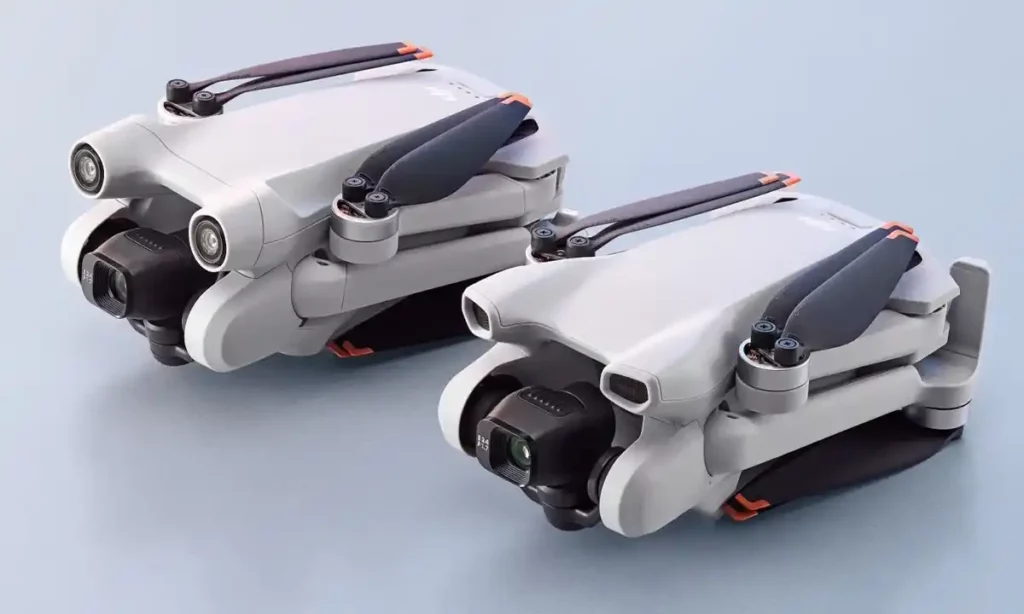
Before delving into the detailed comparison, let’s take a closer look at the DJI Mini 3 and Mini 3 Pro drones individually. These drones are part of DJI’s compact and lightweight “Mini” series, designed to offer exceptional aerial photography and videography experiences.
DJI Mini 3
The DJI Mini 3 is the standard version of the series, known for its impressive performance and user-friendly design. It comes equipped with a 12-megapixel camera and a 3-axis gimbal, ensuring stable and high-quality footage. The drone itself weighs just 249 grams, making it incredibly lightweight and easy to transport.
| Dimensions | Folded (without propellers): 148×90×62 mm (L×W×H) Unfolded (with propellers): 251×362×72 mm (L×W×H) |
| Global Navigation Satellite System | GPS+GLONASS+Galileo |
| Image Sensor | 1/1.3-inch CMOS, Effective Pixels: 12 MP |
| ISO Range | Video: 100-3200 Photo: 100-3200 |
| Max Flight Time | 38minutes(Intelligent Flight Battery) 51minutes (with Intelligent Flight Battery Plus *) |
| Maximum Image Size | 4000×3000 |
| Maximum Video Bitrate | 100Mbps |
| Max Wind Speed Resistance | 10.7m/s (Level 5) |
| Sensing Type | Downward vision system |
| Video Transmission System | DJI O2 |
| Weight | < 249g |
The DJI Mini 3 boasts a maximum flight time of up to 30 minutes, allowing users to capture stunning aerial shots without interruption. It also supports a maximum transmission range of 10 kilometers, ensuring a reliable and seamless connection with the remote controller. With its intelligent flight modes, such as QuickShots and Dronie, users can effortlessly capture cinematic shots with just a few taps on their smartphones.
DJI Mini 3 Pro
The DJI Mini 3 Pro, on the other hand, is the advanced version of the Mini series, offering enhanced features and capabilities. It sports a higher-resolution 20-megapixel camera, providing sharper and more detailed imagery. Additionally, the Mini 3 Pro incorporates a 3-axis gimbal, ensuring smooth and stable footage even in windy conditions.
| Dimensions | Folded (without propellers): 148×90×62 mm (L×W×H) Unfolded (with propellers): 251×362×72 mm (L×W×H) |
| Global Navigation Satellite System | GPS+Galileo+BeiDou |
| Image Sensor | 1/1.3inch CMOS, 48MP |
| ISO Range | Video: 100-6400 Photo: 100-6400 |
| Max Flight Time | 34minutes(Intelligent Flight Battery) 47minutes (with Intelligent Flight Battery Plus *) |
| Maximum Image Size | 8064×6048 (48 MP) |
| Maximum Video Bitrate | 150Mbps |
| Max Wind Speed Resistance | 10.7m/s (Level 5) |
| Sensing | Forward, Backward &Downward |
| Video Transmission System | DJI O3 |
| Weight | < 249g |
Similar to the Mini 3, the Mini 3 Pro also offers an impressive maximum flight time of up to 30 minutes. It features an extended transmission range of 12 kilometers, allowing users to explore and capture footage from greater distances. The advanced flight modes, including ActiveTrack and Point of Interest, enable more creative and professional shots, perfect for aerial photography and videography enthusiasts.
Design and Portability
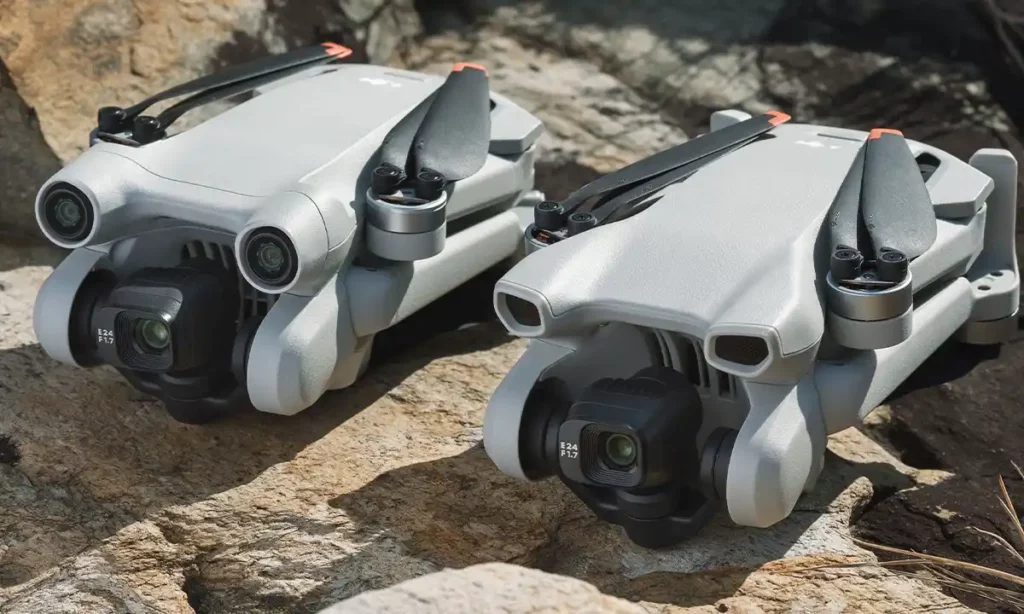
When it comes to design and portability, DJI Mini 3 and Mini 3 Pro offer compact and lightweight options that make them incredibly portable. However, there are some distinguishing characteristics between the two models that set them apart from each other.
Design
The design of both the DJI Mini 3 and Mini 3 Pro is sleek and aesthetically pleasing. They are both small and compact, perfect for on-the-go adventures and capturing stunning aerial footage. However, the Mini 3 Pro takes it a step further with its foldable design. This feature allows the drone to be easily folded and unfolded, ensuring even more convenience during transportation and storage.
In terms of build quality, the Mini 3 Pro introduces improvements that enhance its durability. This means that despite its compact size, the Mini 3 Pro is more resistant to unforeseen crashes and accidents, giving users peace of mind when flying.
Portability
Both the DJI Mini 3 and Mini 3 Pro are incredibly portable. They are lightweight and small, making them easy to carry around in a backpack or even a pocket.
However, the Mini 3 Pro edges ahead in terms of portability due to its foldable design. When folded, it becomes even smaller and more compact, allowing users to bring it along on their adventures without taking up much space. Whether hiking, backpacking, or simply exploring new places, the Mini 3 Pro’s foldable design makes it a breeze to carry around.
Flight Performance
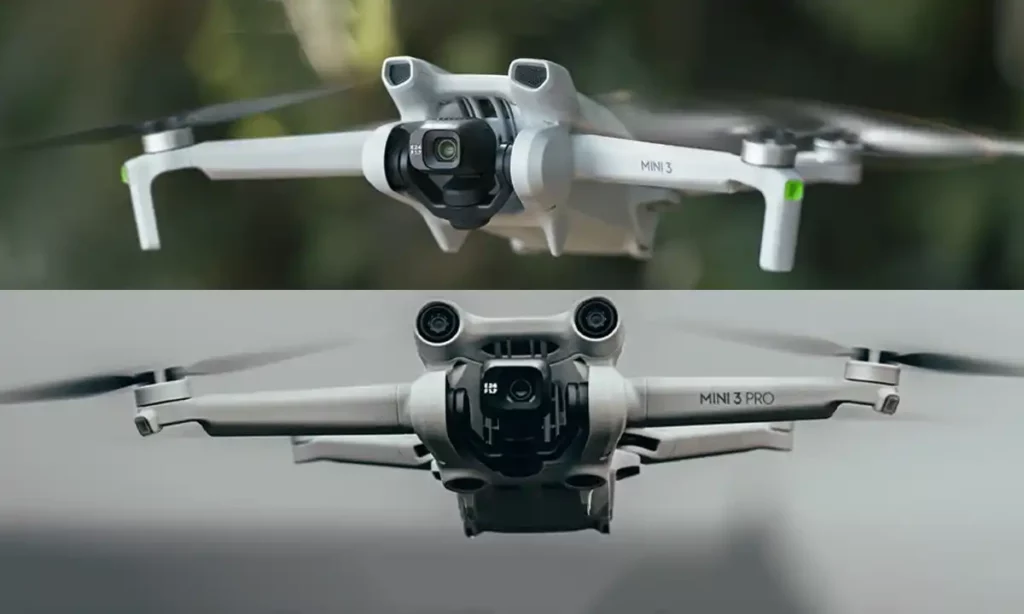
The DJI Mini 3 Pro takes flight performance to new heights with its upgraded motor system. This enhancement provides improved stability and control, even in challenging weather conditions such as high winds. Users can confidently fly the Mini 3 Pro without worrying about sudden gusts affecting the drone’s flight path.
The Mini 3 Pro offers enhanced flight performance compared to the Mini 3. It comes equipped with more advanced flight modes, better obstacle avoidance technology, and an extended flight time. These improvements result in a smoother and more stable flight experience, making the Mini 3 Pro ideal for capturing professional-grade footage.
Additionally, the Mini 3 Pro offers an extended flight time compared to its counterpart. With an improved battery capacity, users can indulge in capturing breathtaking aerial footage for a longer period before needing to recharge. This added flight time is incredibly beneficial for filmmakers, photographers, and enthusiasts who require more time in the air to capture the perfect shot.
The transmission range is another aspect where the Mini 3 Pro stands out. With its extended range of 12 kilometers, it allows users to cover larger areas and explore more remote locations. In contrast, the Mini 3 provides a still impressive transmission range of 10 kilometers. Those who require a broader range for their aerial photography or videography projects may prefer the Mini 3 Pro.
Camera Capabilities
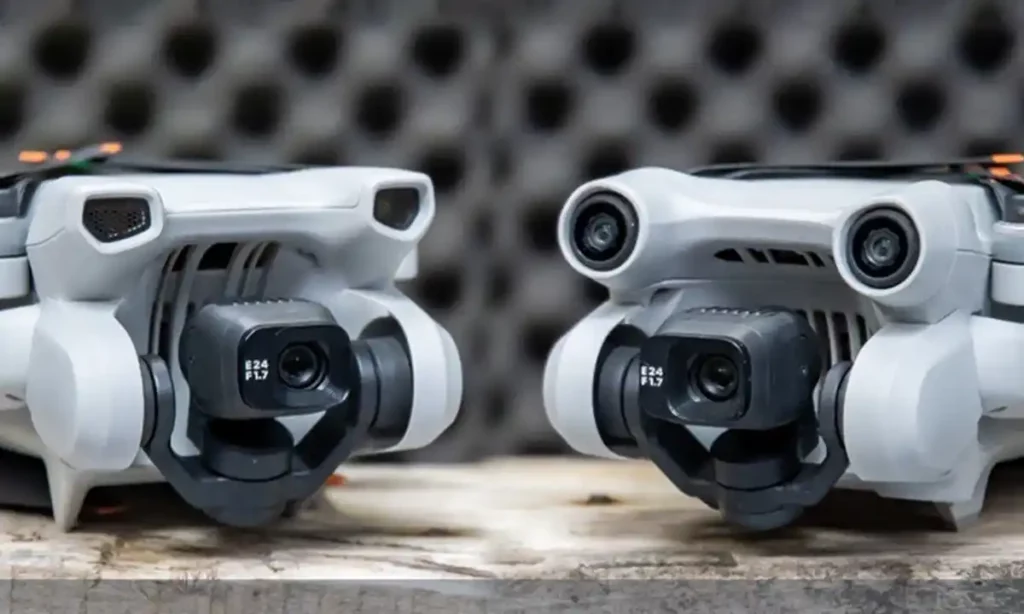
When comparing the camera capabilities of the DJI Mini 3 and Mini 3 Pro, it becomes evident that both drones offer impressive features. However, the Mini 3 Pro takes a leap forward by incorporating several enhancements that set it apart from its counterpart.
Higher-Resolution Sensor for Enhanced Details
The Mini 3 Pro boasts a higher-resolution sensor, leading to the capture of finer details in both images and videos. This advancement translates to clearer and more vibrant visuals, allowing users to showcase their creativity with outstanding clarity and precision.
Optical Zoom for Enhanced Flexibility
One noteworthy feature of the Mini 3 Pro is the introduction of optical zoom. Unlike digital zoom, which simply enlarges the image digitally and sacrifices quality, optical zoom allows users to zoom in without compromising image clarity. This added flexibility enables users to capture distant subjects or unique perspectives while maintaining superior image quality.
Improved Stabilization for Smoother Footage
Another significant enhancement in the Mini 3 Pro is improved stabilization technology. This feature minimizes shaking and vibrations during flight, resulting in smoother footage. Whether you are capturing an aerial view of a scenic landscape or recording fast-paced action, this feature ensures your footage remains steady and professional-looking.
Unlocking Enhanced Creative Possibilities with Mini 3 Pro
The Mini 3 Pro is not just a drone with a better camera; it is a tool that expands creative possibilities for users. With the combination of a higher-resolution sensor, optical zoom, and improved stabilization, users have the ability to experiment with various photography and videography techniques.
For photographers, the Mini 3 Pro’s higher-resolution sensor allows for detailed close-up shots, enabling them to capture intricate textures and patterns. Whether you are photographing nature, architecture, or even portraits, you can rely on the Mini 3 Pro to deliver stunning, high-quality images.
Videographers, on the other hand, will appreciate the Mini 3 Pro’s ability to zoom optically. This feature allows for more dynamic shots, giving filmmakers the ability to capture close-ups from a distance or smoothly transition between different perspectives. Whether you are shooting a documentary, a travel vlog, or a wedding video, the Mini 3 Pro empowers you to tell your story in a visually captivating manner.
Pricing
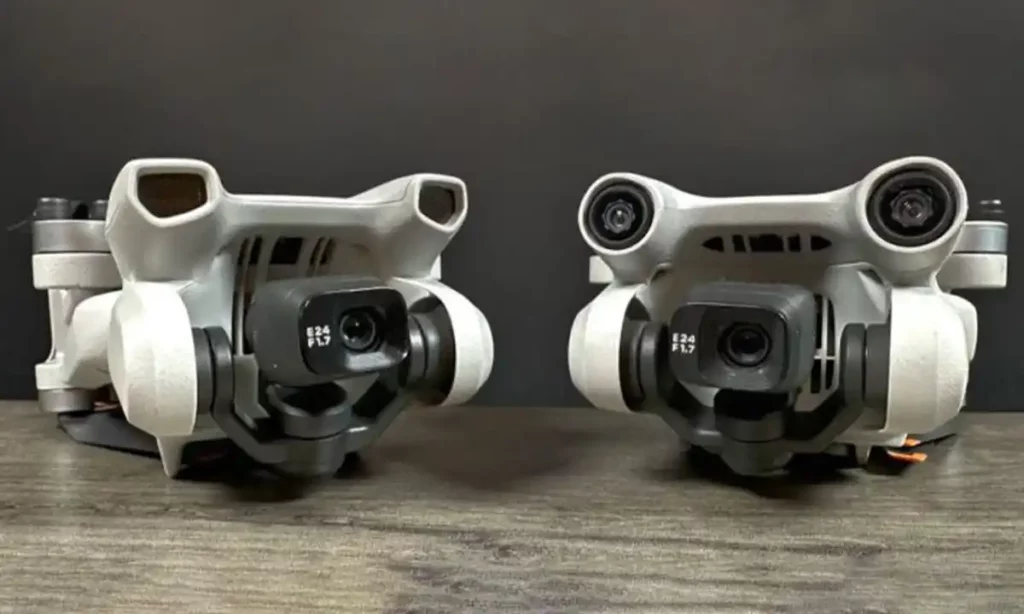
Price can often be a determining factor when choosing between two comparable products. In terms of pricing, the DJI Mini 3 is generally more affordable than the Mini 3 Pro. The price difference may influence budget-conscious individuals or beginners who are just starting to explore the drone industry.
- DJI Mini 3 Pro no controller starting at $669
- DJI Mini 3 Pro with controller starting at $759
- DJI Mini 3 no controller starting at $469
- DJI Mini 3 with controller starting at $559
When it comes to pricing, the DJI Mini 3 Pro is slightly higher in cost compared to the Mini 3. This price difference is justified by the enhanced capabilities and features offered by the Mini 3 Pro. However, it is crucial to carefully consider your needs and budget before making a final decision.
For those customers on a tighter budget, the DJI Mini 3 can still provide an excellent drone experience. It offers a great balance between affordability and functionality, making it an attractive option for beginners or casual drone enthusiasts.
On the other hand, if you are looking for a drone with advanced features and improved capabilities, the DJI Mini 3 Pro might be the right choice for you. While it may require a slightly higher investment, it offers a range of enhancements that can take your drone flying experience to the next level.
Conclusion
In summary, the comparison between the DJI Mini 3 and Mini 3 Pro reveals that both drones offer impressive features and capabilities. While the Mini 3 is more budget-friendly and suitable for beginners, the Mini 3 Pro takes it up a notch with enhanced performance and additional features like improved flight time and obstacle avoidance. Depending on your needs and budget, either drone can be an excellent choice for capturing breathtaking aerial footage. Which one will you opt for: the Mini 3 or the Mini 3 Pro?
